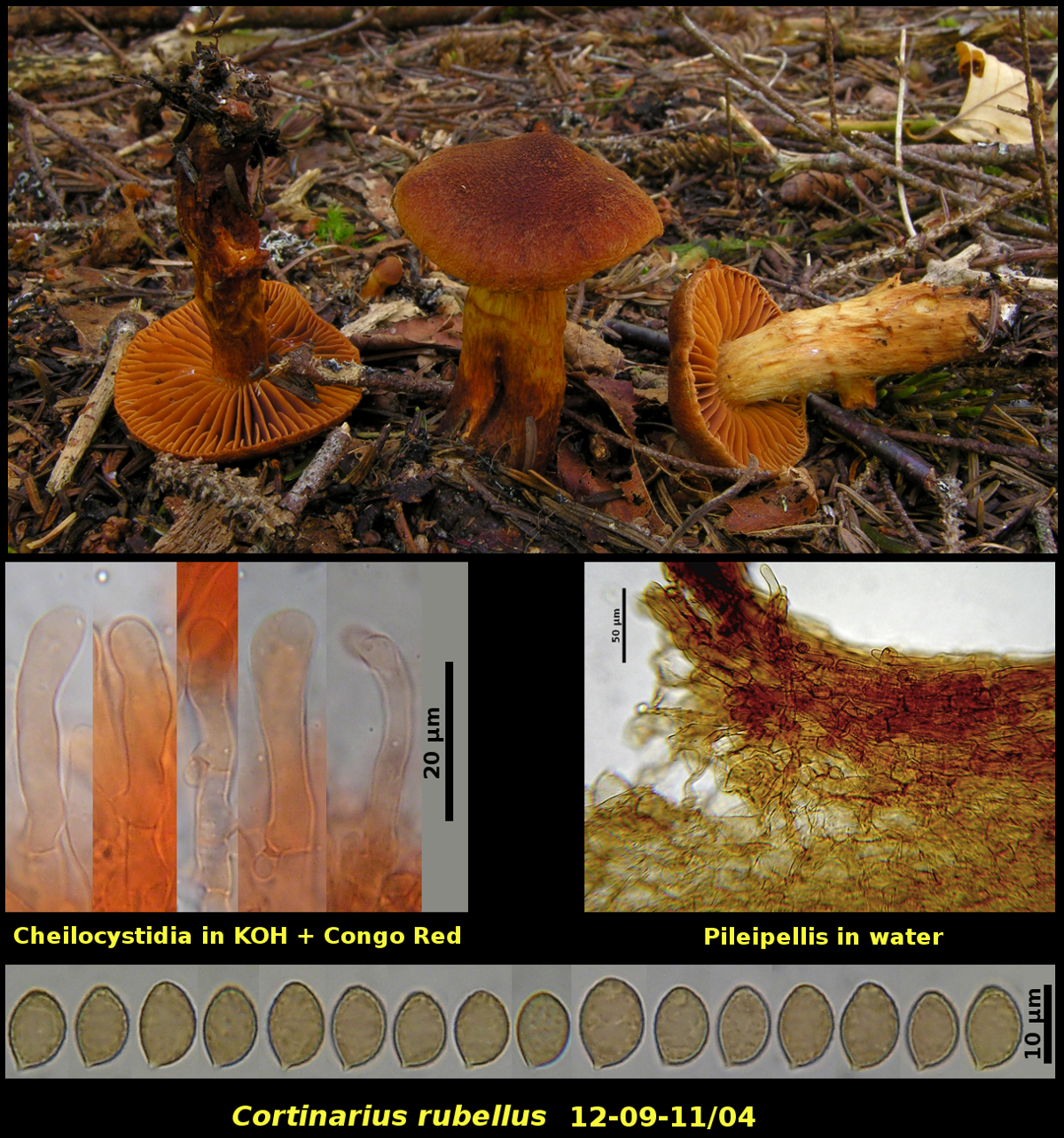Fleshy Fungi of New Brunswick >>
Cortinarius rubellus
Cortinarius rubellus Cooke

Gregarious (8) in soil and litter under Picea rubers and Abies balsamea, Caledonia Gorge Protected Natural Area, New Brunswick. NBM F-04708 (12-09-11/04).
Basidiospores ellipsoidal to broadly amygdaliform, 9.3-11.2 X 6.6-8.3 μm, D/d = 1.33-1.50 (average[28]: 10.1 X 7.1 μm, D/d = 1.42).
Highly toxic; one of the most dangerous mushrooms in the world because the symptoms are so slow to appear, sometimes as late as a week after consumption. Because it is not very common in most places in the world, C. rubellus, and other toxic Cortinarius species, such as C. orellanus, have often not attracted the attention of many authors. For example, the otherwise excellent little book Identification of the Larger Fungi, by Roy Watling, available online through Project Gutenburg, states that no species of Cortinarius is known to be truly poisonous. This statement is misleading and potentially dangerous. Don't believe it. It is best not to eat any species of Cortinarius.
Cortinarius rubellus is easily confused with C. limonius, a species also commonly found along the north Alantic coast. Its orange scaly pileus and narrow spores should distinguish it from C. limonius. The scaly pileus is reflected in the structure of the pileipellis, which is characterized by a layer of dark encysted hyphae that separate easily from the cellular layers below.
Photograph: D. Malloch. NBM F-04708 (12-09-11/04).